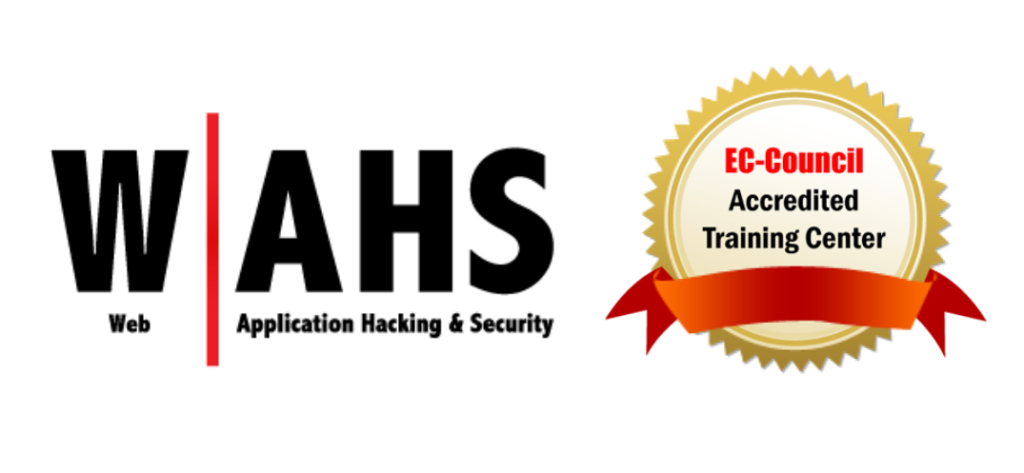
Join the Web Application Hacking & Security
Unical Academy, in collaboration with EC-Council, invites you to enhance your cybersecurity skills with the Web Application Hacking & Security (W|AHS) course. This globally recognized certification program includes comprehensive training and an exam voucher, giving you the expertise to protect systems from cyber threats.
Take the next step in your career and become a certified ethical hacker
About the course
Most of the work we do on a day-to-day basis uses cloud-based apps that are vulnerable to cyber-attacks. Now, with so many published vulnerabilities, it is important to learn to defend and secure your web applications. Traditional protections like firewalls alone do not secure web applications. Defenders need a deep understanding of the most critical security risks to web applications such as the OWASP Top 10. And what better way to learn to gain familiarity and defend than to attack!
The Web Application Hacking and Security (WAHS) course is an immersive, hands-on program designed to equip cybersecurity professionals with the skills to identify, exploit, and secure web applications from both existing and emerging security threats. Modeled after Capture-The-Flag (CTF) competitions, it challenges participants to tackle real-world scenarios based on the OWASP Top-10 web application vulnerabilities, using advanced hacking techniques. With an emphasis on experiential learning, the course incorporates the Break the Code Challenge, pushing candidates to solve progressively complex problems, including SQL injections, security misconfigurations, and privilege escalation. The course concludes with a rigorous, remotely proctored 6-hour practical exam, offering certifications at various levels based on performance, from Certified Web Application Security Associate to the elite Certified Web Application Expert.
Test your skills by tackling real-world vulnerabilities
Beginner
- 6 Challenges
- 60 minutes
- 60 Points
Intermediate
- 6 Challenges
- 120 minutes
- 250 Points
Proficient
- 8 Challenges
- 320 minutes
- 400 Points
Expert
- 4 Challenges
- 240 minutes
- 400 Points
Why EC Council Web Application Hacking and Security

100% Performance based Course!

No Death by PowerPoint! Learn by Doing!

Learn by Doing!

Step By Step Video Instruction
Join US
The Web Application Hacking and Security (WAHS) course offers hands-on training to help cybersecurity professionals identify, exploit, and secure web applications using real-world scenarios based on OWASP Top-10 vulnerabilities. Participants tackle progressively complex challenges and can earn certifications through a rigorous, performance-based practical exam.
Advantages of WAHS Certification
✓ Learn the various techniques for enumerating and exploiting web applications.
✓ Learn tools and techniques to automate web application penetration testing.
✓To understand how to develop and get rid of most common web application attacks.
Web Application Hacking and Security Exam Description:
- The exam tests candidates’ ability to perform web application security assessments under real-life stressful conditions.
- 60%+: Earn Certified Web Application Security Associate.
- 75%+: Earn Certified Web Application Security Professional.
- 90%+: Attain the prestigious Certified Web Application Security Expert.
Web Application Hacking and Security Exam Process Overview:
- The Web Application Hacking and Security exam dashboard will be available for 30 days from
time of activation. Launch your Exam Dashboard when you are ready to take on the exam. - You will need to schedule the exam sessions and clear the exam from the Exam Dashboard
within the validity period of 30 days. - You will need a host machine with a virtual machine running your penetration testing toolkit
to take the exam. Please read the Host System Requirement and Virtual Machine Resource
Requirement carefully
If you are tasked with implementing, managing, or protecting web applications, then this course is for you. If you are a cyber or tech professional who is interested in learning or recommending mitigation methods to a myriad of web security issues and want a pure hands-on program, then this is the course you have been waiting for.
This course will benefit:
- Penetration Tester
- Ethical Hacker
- Web Application Penetration Tester/Security Engineer/Auditor
- Red Team Engineer
- Information Security Engineer
- Risk/Vulnerability Analyst
- Vulnerability Manager
- Incident responder
- Good understanding of web application working.
- Basic working knowledge of the Linux command line.
- Basic knowledge of OSes and file systems.
- Basic knowledge of Bash and/or Python scripting.
Minimum Hardware Requirements for the Host OS:
- CPU: Intel i3 (3.6 GHz per core) 64-bit/AMD Ryzen 3(3.6 GHz per core)
- RAM: 8 GB
- HDD: 60 GB available space
- Peripherals: External or Integrated Webcam
Software Requirements for the Host OS:
- Operating system: Windows 8.1 x64 or later/ MAC OSX
- Virtualization Software: Any latest solution such as VMware Player/VMware Workstation 8.0/VMware Fusion 7.0 or later, Hyper-V, VirtualBox.
- Browser: Any modern browser such as Chrome, Firefox, Internet Explorer
- Internet: A stable Internet connection with a minimum of 5mbps Download and 1mbps Upload speeds. It is recommended to use hard-wired connection instead of wireless.
Your virtual machine should be able to run penetration testing Linux distribution such as Parrot Security/Kali Linux or your own penetration testing toolkit.
VPN Software: The virtual machine should be installed with OpenVPN Connect client software. You can download it at https://openvpn.net/download-open-vpn/. The Parrot Security/Kali Linux distros come pre-installed with the OpenVPN client.
Course Curriculum
- 01. Web Application Enumeration
- 02. Web Application Penetration Testing
- 03. Advanced SQL Injection (SQLi)
- 04. Reflected, Stored and DOM-based Cross Site Scripting (XSS)
- 05.Cross Site Request Forgery (CSRF) – GET and POST Methods
- 06. Server-Side Request Forgery (SSRF)
- 07. Security Misconfigurations
- 08. Directory Brute Forcing/Dictionary Attack
- 09. CMS Vulnerability Scanning
- 10. Auth Bypass
- 11. Insecure Direct Object Reference Prevention (IDOR)
- 12. Broken Access Control (IDOR)
- 13. Local File Inclusion (LFI) and Remote File Inclusion (RFI) (IDOR)
- 14. Arbitrary File Upload
- 15. Using Components with Known Vulnerabilities
- 16. Command Injection
- 17. Remote Code Execution
- 18. File Tampering
- 19. Privilege Escalation
- 20. Log Poisoning
- 21. Weak SSL Ciphers
- 21. Weak SSL Ciphers
- 22. Cookie Modification
- 23. Source Code Analysis
- 24. HTTP Header modification
- 25. Session Fixation
- 26. Clickjacking
